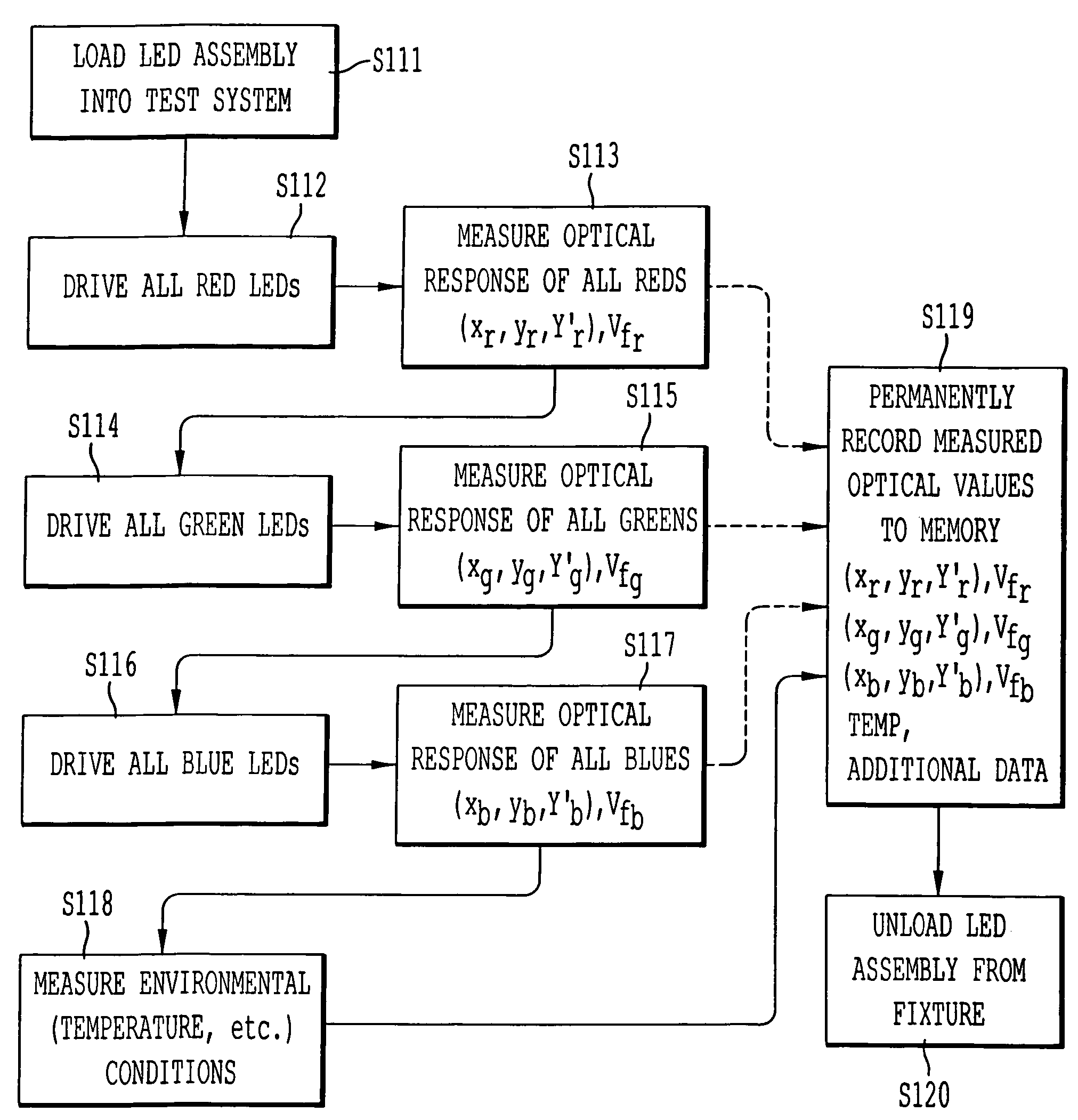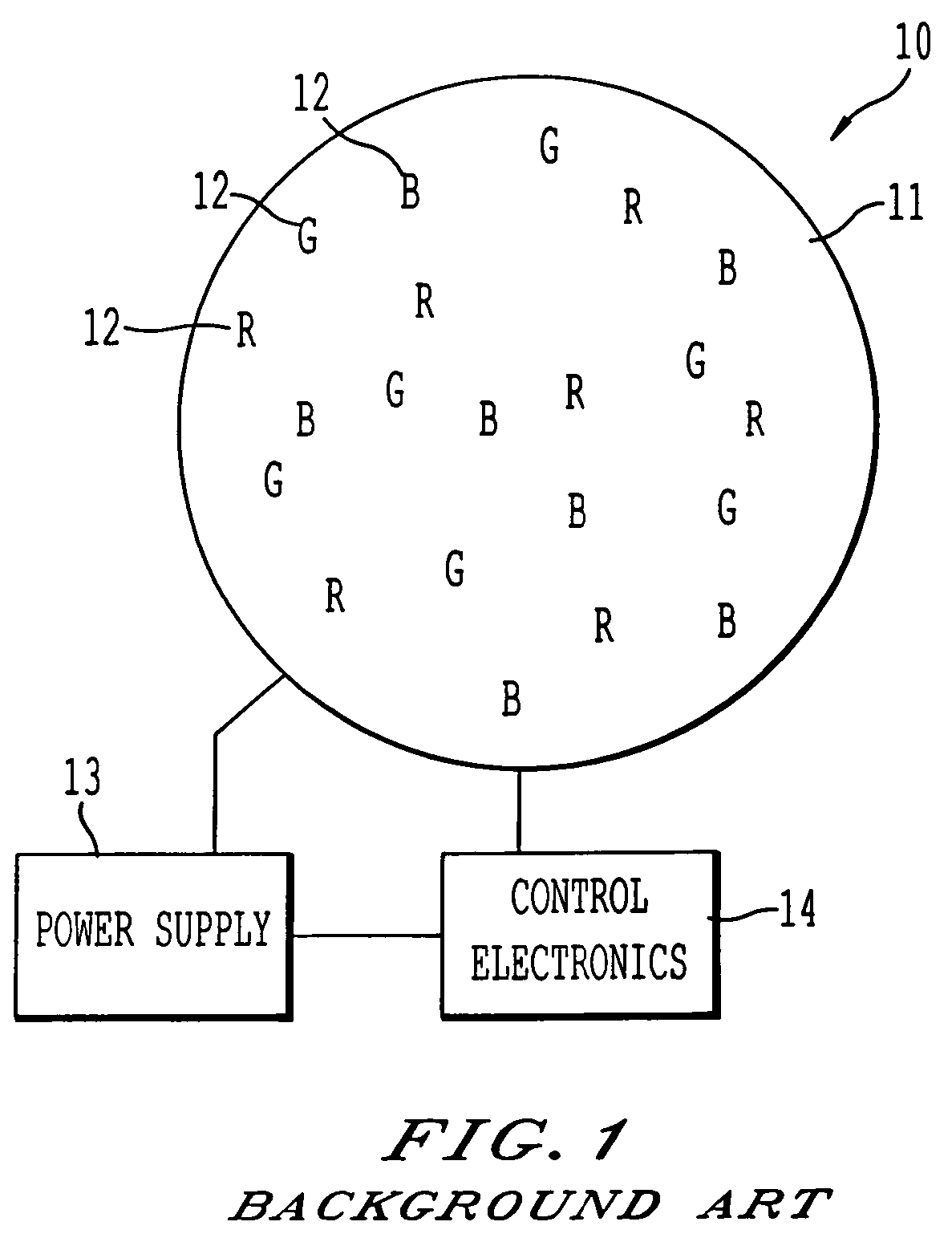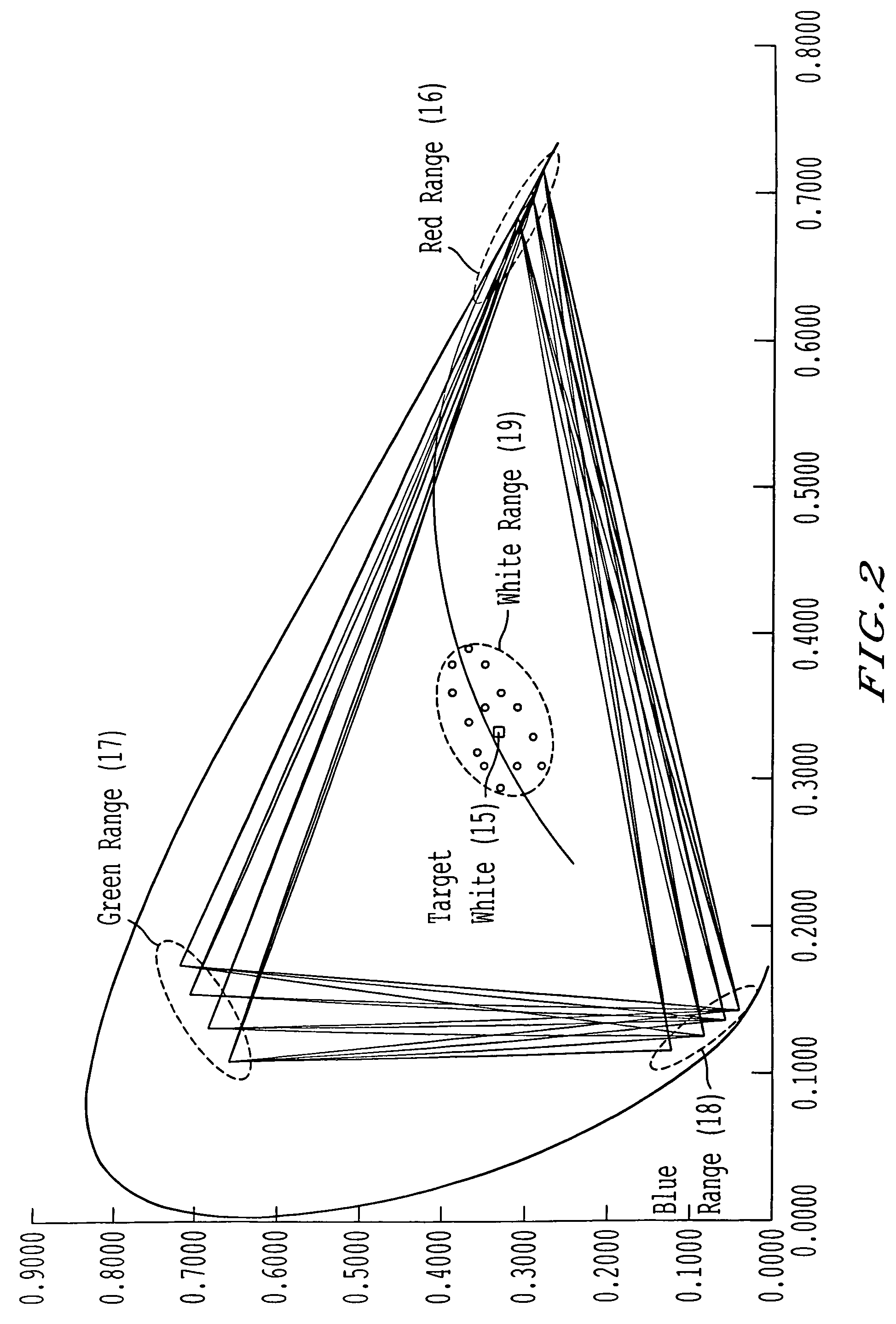LED assembly, and a process for manufacturing the LED assembly
a technology of led assembly and led diodes, which is applied in the direction of process and machine control, electric variable regulation, instruments, etc., can solve the problems of small input energy transfer, most of the input energy of traditional lighting is wasted, and the input energy of traditional lighting is transferred
- Summary
- Abstract
- Description
- Claims
- Application Information
AI Technical Summary
Benefits of technology
Problems solved by technology
Method used
Image
Examples
first embodiment
[0060]the overall control operation of the LED assembly 100 of the present invention as shown in FIG. 6a is to utilize the stored baseline light output data of the Red LEDs, Green LEDs, and Blue LEDs that form the LED light 101 in conjunction with the stored environmental data, perform compensations based on the measured output of those lights and based on measured environmental values, and to output a desired light output.
[0061]In the operation, stored values for the allRed response, allGreen response, and allBlue response are retrieved in processes 21-23. Those values correspond to the values stored in step S119 in FIG. 4. That retrieved information in processes 21-23 can be utilized by compensation and color mixing algorithms to allow a custom color generation to be realized.
[0062]More specifically, the retrieved stored values from processes 21-23 are provided to a process 24 that runs a compensation algorithm to predict an output under current environmental conditions based on t...
case 1
[0089]Iref is the driving current specified by the LED manufacturer and used in the manufacturing testing process to generate the stored values for processes 21, 22, and 23 of FIG. 6.[0090] If Ytotal′≧Yt′ then the following equations apply. The duty cycles are downscaled appropriately to account for the intensity.
case 2
[0091]Drt′=Yt′Ytotal′DrtDgt′=Yt′Ytotal′DgtDbt′=Yt′Ytotal′DbtI=Itested[0092] If Ytotal′t′ then the following equations apply. The driving current is upscaled appropriately to accommodate the additional required brightness.
[0093]Drt′=DrtDgt′=DgtDbt′=DbtI=Yt′Ytotal′Itested
[0094]The targeted color is therefore displayed for both case 1 and case 2 using the duty cycles (Drt′,Dgt′,Dbt′) and the driving current I.
[0095]FIG. 6b shows a modification of the embodiment of FIG. 6a, which can be applied to a device including different colored LEDs of Red LEDs, Blue LEDs, Green LEDs, and Amber LEDs. That is, instead of having a system with only three colors of Red, Blue, and Green, a system can incorporate four colors of Red, Blue, Green, and Amber. In those circumstances the operations shown in FIGS. 3a, 3b, and 4 will also perform operations directed to the Amber LEDs similarly as for the Red, Green, and Blue LEDs. As a result, measured optical values stored in memory will also include data...
PUM
 Login to View More
Login to View More Abstract
Description
Claims
Application Information
 Login to View More
Login to View More - R&D
- Intellectual Property
- Life Sciences
- Materials
- Tech Scout
- Unparalleled Data Quality
- Higher Quality Content
- 60% Fewer Hallucinations
Browse by: Latest US Patents, China's latest patents, Technical Efficacy Thesaurus, Application Domain, Technology Topic, Popular Technical Reports.
© 2025 PatSnap. All rights reserved.Legal|Privacy policy|Modern Slavery Act Transparency Statement|Sitemap|About US| Contact US: help@patsnap.com



